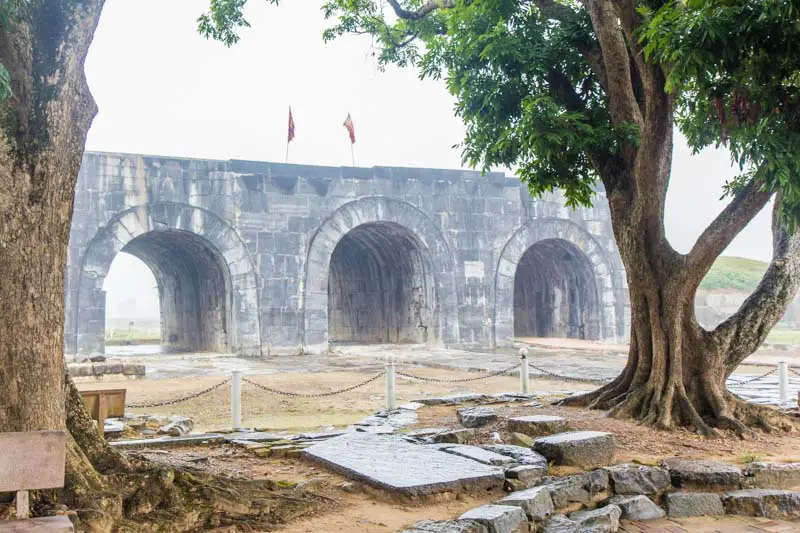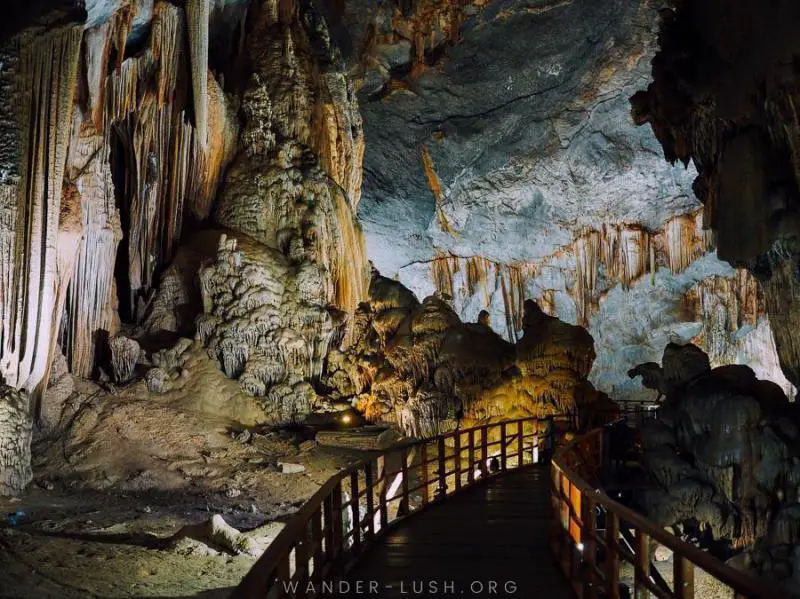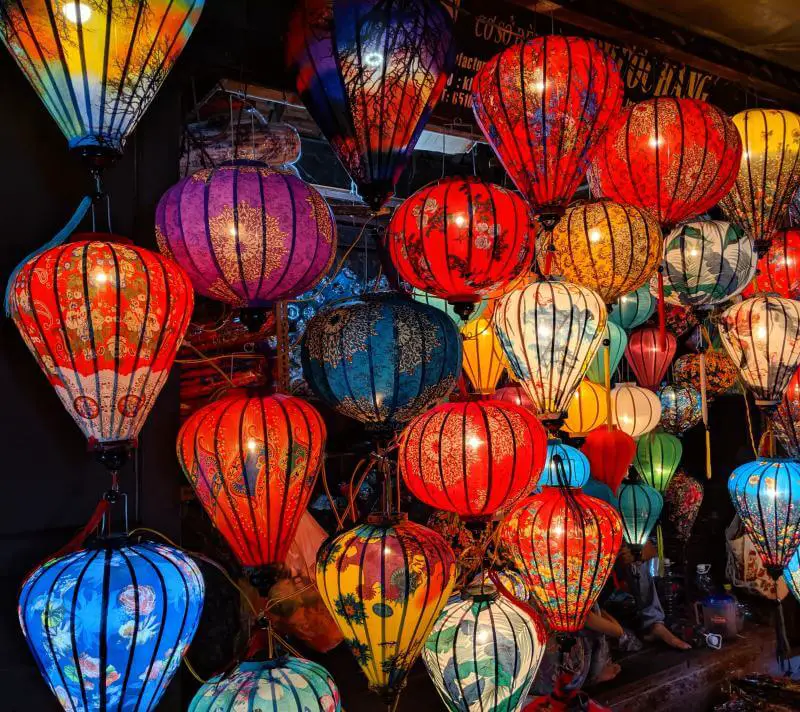8 Incredible UNESCO World Heritage Sites in Vietnam To Visit
Do you have an ambitious goal of visiting all 1121 UNESCO sites in the world? If so, consider checking out the 8 World Heritage Sites in Vietnam. There are currently 5 cultural, 2 natural, and 1 mixed (that has both cultural and natural aspects) UNESCO (United Nations Educational, Scientific and Cultural Organization) recognized sites.
We reached out to our favorite travel bloggers (also known as “UNESCO World Heritage Sites chaser”) to showcase the 8 incredible UNESCO World Heritage Sites in Vietnam. Our list is organized by the site’s location from north to south Vietnam. Each section has information on the site, how to get there with various transportation options, and the admission cost. Although we’re living and traveling through Vietnam, we haven’t had the chance to visit all the sites yet.
UNESCO has rigorous selection criteria as all sites must provide an incredible value to visitors. What we like about the UNESCO sites in Vietnam is that they provide a well-rounded experience from the historic cities to the jaw-dropping landscape views. It’s a wonderful opportunity to learn more about Vietnam.
Interested in our other UNESCO post? Check out why we love these Creative Cities of Gastronomy and World Heritage Sites in Indonesia.
*Disclaimer: We’re giving you a heads up that this post contains affiliate links. If you click on them and make a purchase for your Vietnam trip, we receive a small commission. There is no additional cost to you. Appreciate the support.
Map of the UNESCO World Heritage Sites in Vietnam
Central Sector of the Imperial Citadel of Thang Long – Hanoi
By Ania, The Travelling Twins
Hanoi’s delicious healthy food and its lovely character is a great place to revisit several times. Hanoi Citadel, or its formal title, “The Imperial Citadel of Thang Long,” is a slight change from the hectic bustle of the city.
Unlike most of historic Hanoi, this is an archaeological site rather than a group of ancient buildings. It’s an important one as recognized by UNESCO since 2010. This site was the regional center of power for 13 centuries. A Chinese fortress stood on the site until the 11th-century, when the Vietnamese rebuilt it during their era of independence. It remained the seat of the Vietnamese royal court until they moved to Hué in 1810.
Most of the buildings about the site today date from more recent history. The 19th and 20th centuries largely disregarded the Citadel until its rediscovery under the present excavations. Along with the excavated foundations and pavings, there are several galleries in the museum. Objects found on the site are exhibited here alongside film presentations.
To bring history up to date, you can also climb down into the cramped scary tunnels of a war bunker too. This is right in the middle of the ancient site and a sad relic of the 1960s.
If you’re visiting Hanoi with kids, definitely include the Citadel in your plans. My children enjoyed exploring it, asking questions about its long history, and seeing the beautiful objects. It’s also a gentle change of environment from the city.
UNESCO Recognition Year: 2010
How to Get There: Hanoi Citadel is in the middle of the city, within walking distance of the old town. It’s open daily except for Mondays from 8:00am to 5:00pm.
If you prefer to take a city tour in Hanoi, check out these options:
Admission Cost: Entrance is VND 30,000 (About $1.25 USD) for adults. Entry is free for under the age of 15, and half-price for Vietnamese students and over the age of 60.

Halong Bay
By Jackie & Justin, Life Of Doing
Halong Bay (or Ha Long Bay) is one of those once in a lifetime adventures to have in Vietnam. Located in Quang Ninh Province, the bay is massive at 1550 square kilometers (600 square miles) and has approximately 2,000 islands. Besides the UNESCO recognition, it’s also considered a New Seven Natural Wonders of the World. While tourism has boomed in Halong Bay, the area is still stunning with the many natural limestone karsts perched along the calm, turquoise water.
The best way to see the bay up close is via a day trip or an overnight cruise on a junk boat. They are wooden boats that the ancient Chinese used for transportation. The boats are a natural wood color, yet in Halong Bay, they’re required to be painted white. If you have the time and the budget, spend 2 days/1 night on your Halong Bay cruise to fully enjoy the experience.
Top activities include relaxing on a beach or on your boat’s rooftop, exploring a cave with amazing stalactites, eating fresh seafood, and taking a sampan boat ride to see the mesmerizing landscapes. During your one-hour sampan boat ride, your rower takes you through a floating fishing village and underneath the karst (don’t forget to duck your head with the low ceiling!).
You may also go kayaking or snorkeling around the bay area, but that depends on when you visit Halong Bay. The water may be too cold! Regardless, you’ll have a fantastic time here as Halong Bay is a relaxing and serene place to visit.
UNESCO Recognition Year: 1994
How to Get There: Most people tend to leave Hanoi to Halong Bay via a 4-hour car or bus ride. Another option is to take a flight to Vietnam’s newest airport, Van Don International Airport (airport code: VDO), which is 50 kilometers (31 miles) from Halong Bay. It’ll take an hour to get to the port from the airport. It’s recommended that you have a tour pre-booked before arriving in Halong Bay as it’s a popular destination.
Check out the tour options below for Halong Bay:
Admission Cost: Your admission to the Halong Bay entrance fee is included in your day or overnight cruise tour.

Trang An Landscape Complex
By Penny, GlobeTrove
Trang An is a gorgeous UNESCO site in Vietnam and certainly merits a visit. A lot of people underestimate its beauty because they take it as a boat ride through the karst landscape. The perception is definitely wrong and Trang An is nothing short of gorgeous.
With an interconnected network of waterways through caves and numerous different religious structures that could only be accessed by boat, you will find that your jaw will drop open. The journey through the site will take anywhere between 2-3 hours depending on your pace. If you have time to head in there and exit somewhere closer to dusk, you’ll find that it’s the perfect time to watch the birds.
Every boat requires four passengers aside from the person who is navigating the boat. The boat will depart only once it is full. That means that you may have to wait a while until the boat fills up. If luck is on your side you won’t have to wait long. The later you head out, the fewer tourists you will come across and in a way, it was a blessing because you get to experience the karst landscape without the usual hub dub that the tourists bring. It was a quiet and peaceful journey that we loved.
UNESCO Recognition Year: 2014
How to Get There: Take a car, shared minivan, bus or train from Hanoi to Ninh Binh. It’ll take about 2.5-3 hours for each of these transportation options. Once you arrive, you can head to Trang An boat area via bus, taxi, or walking. You can also take an organized tour that will depart from Hanoi.
Here are tour options for Trang An:
Admission Cost: The cost can vary starting at 150,000 VND ($6.50 USD) per person for the boat ride.

Citadel of the Ho Dynasty
By Michael, Time Travel Turtle
The Citadel of the Ho Dynasty is one of those places that is important – academically. But for the average tourist, there isn’t much to see, which is a shame because there is an interesting story behind the site.
It was the political center of the Ho Dynasty that ruled over this region during the 14th century. But unlike many of the other dynasties, that had long reigns, the Ho Dynasty only lasted for six years. Still, it was enough to build an impressive citadel that introduced a new style of imperial city to Asia. It also used neo-Confucianism principles to build this city amongst a beautiful natural landscape.
So why is it so uninspiring these days? Well, because there isn’t much left.
The most imposing part of the citadel that you can still see is the large stone wall around the boundary, about 900 meters (.56 miles) on each side. You can walk along the top of it and look down into the main city grounds. Most of them are farmland these days, though. You’ll likely see farmers making their buffalo walk through rice paddies on the ground that was once a grand citadel – and that may be the most interesting part of your day!
UNESCO Recognition Year: 2011
How to Get There: Visiting the Citadel of the Ho Dynasty is difficult – because so few tourists come here. If you’re using public transport, the easiest way is to get a local bus from Thanh Hoa, which will take you about 90 minutes.
Admission Cost: The entrance fee is only 10,000 VND (less than US$0.50) and that includes a small museum on the site.

Phong Nha-Ke Bang National Park
By Emily, Wander-Lush
One of Vietnam’s natural World Heritage Sites, Phong Nha-Ke Bang National Park was inscribed by UNESCO in 2003. The listing recognizes the area’s geological value (it’s one of the largest karst landscapes in Southeast Asia), its primary forests, and abundance of wildlife (including Clouded Leopards and Langurs).
The park is located in Central Vietnam, at the country’s narrowest point, and borders on the Hin Nammo Conservation Area in neighboring Laos. Because of its location, the area was heavily targeted during the Vietnam-America War. One of the more unusual ways to explore the National Park is by cycling a portion of the legendary Ho Chi Minh Trail – a supply line carved out through the jungle.
Aside from its war history, Phong Nha-Ke Bang is best-known for its wet caves and underground rivers. A spotlight was thrown on the area in the 1990s when a local happened upon Hang Son Doong, the world’s largest cave. A network of smaller caves on the edge of the Park draws tourists with activities such as hiking, kayaking, mud bathing, and zip-lining. Multi-cave day tours are a popular way to experience the area’s natural beauty.
Related: Check out the Hang En Cave trekking guide
UNESCO Recognition Year: 2003
How to Get There: The best way to access Phong Nha-Ke Bang National Park is via the nearest city, Dong Hoi. The international airport at Dong Hoi is serviced by regular flights from both Hanoi and Ho Chi Minh City, as well as Chiang Mai, Thailand. There’s also a train station in Dong Hoi, with overnight trains arriving from the capital. Local buses connect Dong Hoi with the town of Phong Nha, where you can find a wealth of guesthouses and hostels sprinkled along the banks of the Song Con river.
If you prefer to take a Phong Nha tour, check out these options:
Admission Cost: Entrance to the National Park is free, yet caves will have different entrance fees.

Read More: Cycle through the Phong Nha’s Bong Lai Valley
Complex of Monuments at Hue
By Soumya, Stories by Soumya
Hue, the capital city of the Nguyen Dynasty from 1802 to 1945, was an important cultural and spiritual center of Vietnam in medieval times. The city is located on the banks of the Perfume River which gives Hue a unique, picturesque setting.
During the reign of the Nguyen Dynasty, many stunning monuments of outstanding cultural and architectural value were built in Hue. These include the Hue Citadel (includes the Imperial City, Forbidden Purple City, and royal residences), fortresses, important temples, and royal tombs. Together, they make the Complex of Monuments at Hue.
These monuments were built in natural harmony with the surrounding landscape so much so that the landscape is often considered part of the complex. The Complex was awarded the UNESCO heritage status in 1993.
Taking a guided tour of Hue’s Monument Complex is an interesting component in every traveler’s itinerary. It not only gives you an insight into Vietnamese royal families but also helps you appreciate the perfect harmony that nature and man can coexist in. Also, signage inside the complex isn’t great and the area is huge.
UNESCO Recognition Year: 1993
How to Get There: Hue is usually done as a day trip from the beach city of Danang. You can also take a flight, train, or bus from either Hanoi or Ho Chi Minh City to get here.
Check out the tour options below to explore Hue:
Admission Cost: You can visit the Hue Imperial City by purchasing a ticket for 150,000 VND ($6.50 USD). By adding 100,000 VND ($4.30 USD) extra, you can cover some of the more significant tombs as well. Combined tickets are also available.
My Son Sanctuary
By Alina, The Happy Kid
Not very far from the well known Hoi An, there is My Son temple complex, an important Vietnamese UNESCO site. My Son used to be an important center of the Champa civilization between the 4th and the 14th century. The temples are dedicated to the god Shiva and represent the longest inhabited archaeological site in the Indochinese Peninsula.
The most important Hindu temple complex in Vietnam, My Son is compared with other similar places in Southeast Asia, like Angkor Wat in Cambodia or Bagan in Myanmar. Unfortunately, a significant part of My Son was destroyed during the Vietnamese War, bombed by the United States. Only 17 out of the original 71 structures are still standing and most of them are in pretty bad shape, despite the intensive conservation work.
The site is open for visitors from 6:00am until 5:00pm. It’s advisable to go early in the morning to avoid the heat, even though in the afternoon there aren’t so many people as most of the organized tours end by 2:00pm.
UNESCO Recognition Year: 1999
How to Get There: The best option to visit My Son Sanctuary is by renting a scooter. It’s a one-hour ride from Hoi An through a picturesque, authentic rural landscape. You can also hire a driver to take you there or take an organized tour.
Here are My Son Sanctuary tour options for you to consider:
Admission Cost: The entrance fee is 150,000 VND ($6.50 USD).

Read More: Check out the other Cham Towers in Vietnam – Quy Nhon’s Banh It and Twin Towers, Nha Trang’s Po Nagar, and Mui Ne’s Po Shanu.
Hoi An Ancient Town
By Jackie & Justin, Life Of Doing
Hoi An is the perfect destination as a day trip from Danang or to spend a few days here. As a former trading port city in the 15th and 19th century, the city had international traders from China, Japan, India, and Europe flowing through the Thu Bon River. Currently, this quiet and laid-back city is a nice balance between history, culture, architecture, and shopping galore.
Most visitors will spend their time walking through Hoi An’s Ancient Town as many of the attractions are concentrated here. It’s a small area so it can get crowded at times. Take a walk over the iconic Japanese bridge, visit the Phuoc Kien Pagoda, learn about the culture at the Museum of Folk Culture Museum, and admire the architecture of the traditional houses. You don’t have to worry about motorbikes in the area as the roads are closed off to them during certain hours. Watch out for the cyclo drivers instead.
If you’re eyeing an opportunity to go shopping, Hoi An is a shopping paradise. From the Night Markets to the local handicrafts store, there are plenty of places to purchase souvenirs. Popular gift items include silk lanterns, ceramics, jewelry, and clothes (the fruit Hawaiian prints are the must-have items!) Definitely consider getting clothes tailored such as suits, dress shirts, dresses, and shoes at affordable prices. They will be ready in 2-3 days.
The best part about visiting Hoi An is walking next to the riverside during the evenings. The views are stunning with the colorful lanterns illuminating the riverside and alleyways.
UNESCO Recognition Year: 1999
How to Get There: Most visitors arrive in Danang International Airport and take a taxi, Grab car (same concept as Uber in the United States), or hire a driver. The ride will take approximately 50 minutes to 1 hour depending on traffic.
If you would prefer to take a tour in Hoi An, check out these options:
Admission Cost: Visitors need to purchase a ticket at the ticket stations to walk around the Hoi An Old Town area. Tickets are 120,000 VND and provide access to the town and 6 local sites (museums or old houses). Bring the ticket with you at all times as it’s valid during your stay in Hoi An. However, the enforcement of the ticket isn’t consistent at various checkpoints.

We hope you’re inspired to visit one or all of these UNESCO World Heritage Sites in Vietnam. It’s our goal to see as much of them as possible during our stay here.
Need more information about Vietnam? Continue reading our other Vietnam posts:
Which of these World Heritage Sites in Vietnam do you want to see? If you’ve been to some of them already, which one is your favorite? Let us know in the comments below.
Like this UNESCO post? Save it to your Vietnam Pinterest board.
Featured photo & pin #1 photo credit: Lucia de la Hoz via Scopio Photos















![Toni Kroos là ai? [ sự thật về tiểu sử đầy đủ Toni Kroos ]](https://evbn.org/wp-content/uploads/New-Project-6635-1671934592.jpg)


